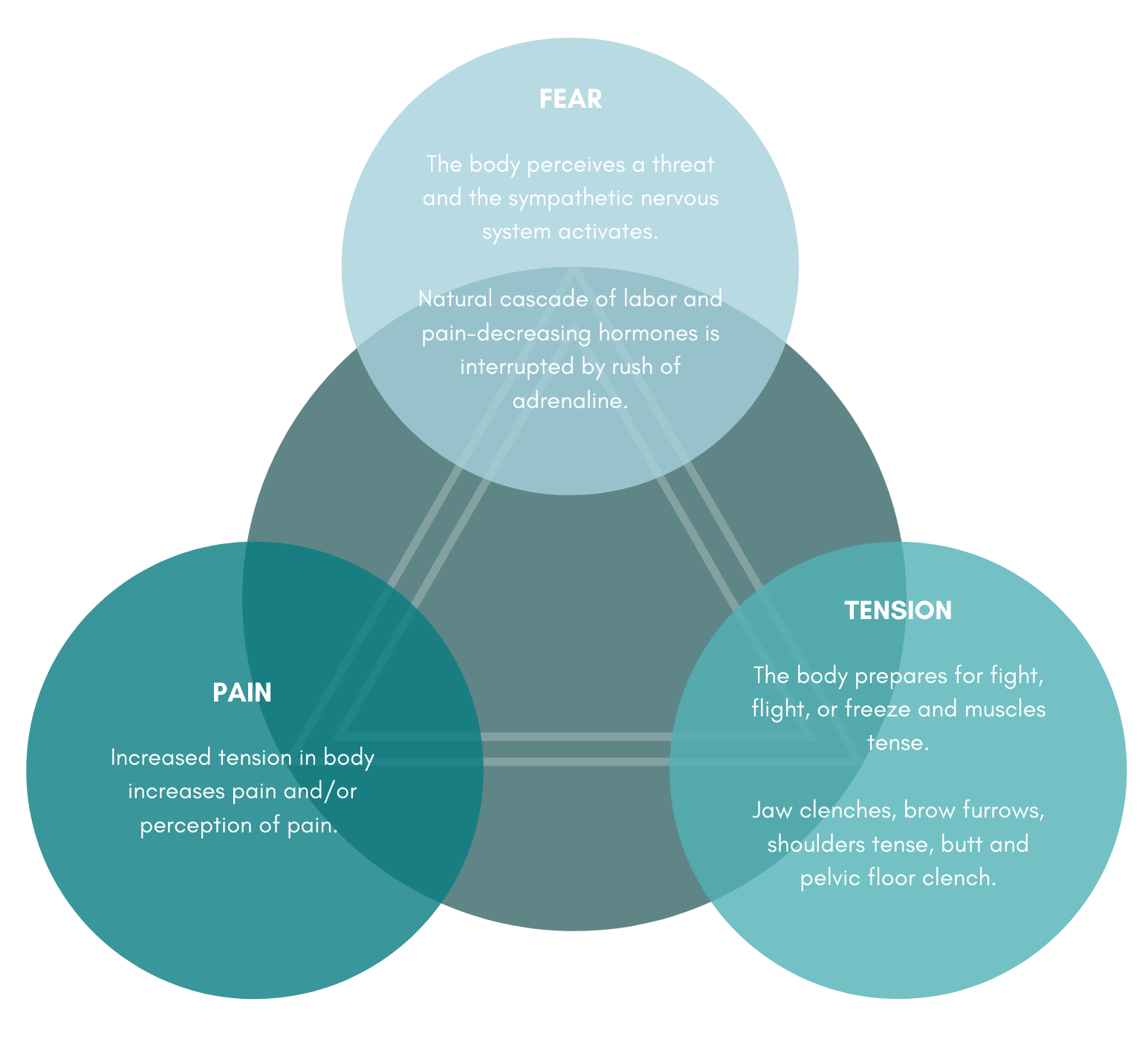GTFO: Get the fear out
I'm going to start with a fairly obvious statement today: birth is intense. No matter how birth unfolds -- be it a spontaneous vaginal labor, a medical induction, or a scheduled cesarean birth -- birth is an intense, transformative, emotional, physical, whole-body, out of body, rollercoaster of an experience.
Picture any modern TV show or movie with a birth scene. What do you see? More than likely, what comes to mind is a spectacular and dramatic gush of water breaking -- likely at brunch or some other wildly public place in the middle of the day -- followed by a sped up scene of a person sweating, grunting, screaming, and swearing while attempting to detach some poor bumbling partner's hand from their arm, and then two pushes later a 3 month old baby pops out! Ta da! Birth!
Except that's very rarely what birth actually looks like. While scenes like this might make for good TV, depictions of birth as loud, chaotic, painful and frightening do birthers and their partners a complete disservice. Like I said, birth is intense, but not in the way we've been taught to think.
In the 1920's a doctor named Grantly Dick-Read hypothesized that the more a person feared labor and birth, the more they tensed up. Increased tension resulted in increased perception of pain. Increased pain resulted in increased fear that something was wrong, and so on and so forth in a vicious feedback loop of discomfort. He called this the fear-tension-pain cycle.
Image credit: Allie Malinovich
He wasn't wrong, and there's a scientific reason for this. In the face of a threat, our sympathetic nervous system -- otherwise known as our fight, flight or freeze response -- diverts blood and energy from non-essential organs like the uterus to your brain, heart, and lungs in order to increase your chances of survival. Our muscles tense so that we can spring into action if needed. Our adrenal glands begin to pump out adrenaline and our breathing quickens. We become the opposite of chill.
Now, our bodies are good at responding to threats, but not awesome at deciphering what is an actual threat -- like a hungry tiger about to pounce -- and what is a perceived threat -- like fear of pain or mistrust in your body. This automatic response is great in a fight with a tiger, not so great in labor. Why? Because the sympathetic nervous system turning on interrupts the cascade of natural hormones such as oxytocin, endorphins, and prolactin that allow our body to physically relax and open, and which also decrease the sensation of pain. By fearing the sensations of labor, we actually make the sensations of labor feel worse.
To learn more about what pain really is and how our perception of danger impacts our pain experience, watch this amazing TedxTalk by Lorimer Moseley.
Whether your birth involves pharmacological pain relief or progresses unmedicated, mental preparation for the sensations and the emotions of labor can be key so that your brain does not interpret what is a very natural and normal (albeit intense) physiological event as a threat. Our goal in birth is to disrupt the cycle in two ways:
Reduce fear by educating the birther, both prenatally through comprehensive childbirth education and in labor by explaining any proposed interventions, what the options are, and the risks/benefits of each.
Reduce tension by promoting relaxation, thus reducing pain.
Need ideas on how to do the above? Check out our childbirth prep course with two hours of pre-recorded content taught through the lens of pelvic floor preparation, consider hiring a doula, and start repeating these 15 birth affirmations for people who kind of scoff at birth affirmations to yourself.
Allie (she/her) is our resident doula brain and front office manager extraordinaire. Allie is a DONA-certified birth doula and a passionate advocate for better care for people before, during, and after childbirth.


